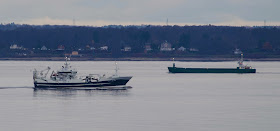 |
| Balthazar von Platen founded the Motala Verkstad company in 1822 in order to manufacture the large quantity of iron parts, tools, locks, and bridges that were needed during the construction of Göta Canal. The company, which still exists, was conveniently located by the canal. |
The idea to build a canal connecting
Sweden's Baltic coast with the big lakes and the west coast had been discussed already in the 16 century. One important reason for wanting to build a canal through Sweden was the wish to avoid the rather expensive Danish
Sound toll that every ship sailing through the
Øresund strait was required to pay.
However, it was not before the early 19th century that the plans to build a canal were realized. The man who finally was able to get official support for the
Göta canal project was
Balthazar von Platen, who had visited and was inspired by the canals that had been constructed in
England and
France.
Von Platen invited the British engineer
Thomas Telford (the constructor of the
Caledonian canal in
Scotland) to plan the new canal, the building of which began in 1810. The 190 km long canal, of which 54 miles (87 km) were dug or blasted, was inaugurated in 1832. Together with the previously built
Trollhätte canal it formed the backbone of a 614 km long waterway linking
Göteborg on the west coast with
Söderköping on the east coast.
 |
| (image wiki) |
During the early phase of industrialisation the Göta canal played an important role in fulfilling the transportation needs of Swedish industries. However, it did not take long before the fast developing railway network took over more and more of the transports.
The fact that the canal (7 - 14 m wide, with a max. depth of 3 m) could only accommodate ships with a maximum length of 32 m and a cargo capacity of max. 200 DWT was a major drawback. And the Danish Sound toll - the original reason for building the canal - was abolished in 1857.
As late as in the early 1920s there were plans to expand the Göta canal and other Swedish canals. However, not much happened, and the canals - particularly the Göta canal - are nowadays major tourist attractions, mainly used by recreational and tourist boats.
The
Dalsland canal, inaugurated in 1868, is another well-known Swedish canal, which enables ships to sail between
Lake Vänern and central parts of the
Dalsland and southwestern
Värmland lake districts. Only 12 km out of the 250 km stretch of the canal system had to be dug, as the builders could make good use of the numerous lakes which span this area.
Below is a small collection of photographs from the late 1890s, showing sceneries and marine traffic along the Göta canal, the
Trollhätte canal (which is considered to be part of the Göta canal) and the Dalsland canal.
 |
| A canal scenery in Motala. |
 |
| The canal view at the Motala Verkstad company was rather idyllic still in the 1890s. |
 |
The passenger steamer Pallas, here shown at the Motala lock, was built by Motala Verkstad
in 1885,mainly in order to transport Finns emigrating to the US to Gothenburg, where they boarded ocean liners taking them to America. |
 |
| The S/s Pallas, photographed in front of Vadstena castle. |
 |
| A lock at Söderköping at the eastern end of the canal. |
 |
| A man operating the lock in Mariehof. |
 |
| The bridge at Venneberga. |
 |
| The Göta Canal Steamship Company steamer Wadstena. (Photo probably from the end of the 1910s.) |
 |
The S/s Wilhelm Tham, built in 1912 by Motala Verkstad, is still in use on the
Stockholm - Gothenburg route. |
 |
| The Göta Canal Steamship Company cargo ship S/s Tyra. |
 |
| The locks at Mem, in the eastern end of the canal. |
 |
| A steamer approaching the lock at Norsholm. |
 |
| The port of Vänersborg. |
 |
| The port of Hjo. |
 |
| The port and railways station at Töreboda. |
 |
| Locks at Trollhättan. |
 |
| The Trollhättan rapids. |
 |
| The Håverud aqueduct is still today a major tourist attraction. |
 |
| The lock at Långed (Dalsland canal). |
 |
| A view of the Bengtsfors lock at the Dalsland canal. |
 |
| A ship entering the Lennartsfors lock of the Dalsland canal. |
In case you are interested in a trip on the canal, the
Göta Canal Steamship Company is a good place to start.














.jpg)





































